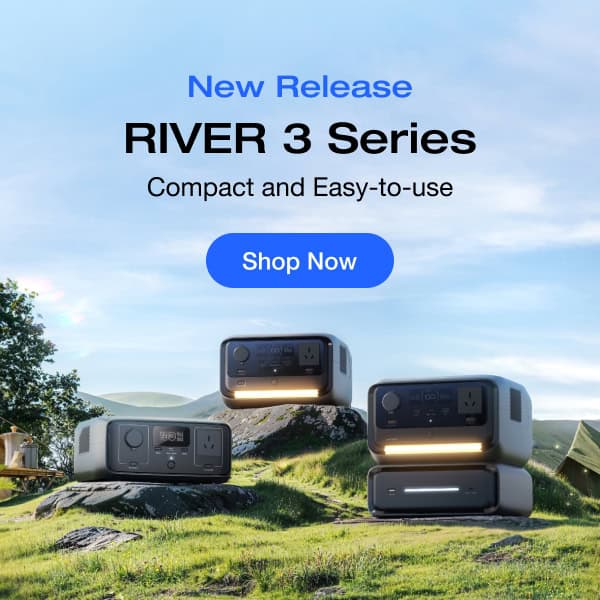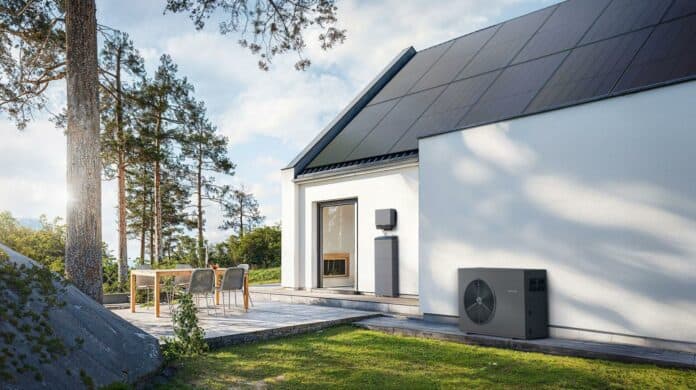Table of Contents
Are you tired of paying high electrical bills? You may want to find a cleaner and more sustainable energy source than your grid provides, or you may enjoy the freedom of energy independence.
This article will discuss five ways to generate power for your home and save significant money on your utility bills. Then, we’ll discuss the simplest way for homeowners to generate their own power with step-by-step instructions.
Now, let’s learn cost-effective ways to generate electricity at home and take control of our own power.
5 Ways To Generate Electricity at Home
With rising electrical prices, more homeowners are starting to generate their own renewable energy to reduce or even eliminate their bills.
Solar
Solar power is the most effortless electricity generation method you can set up at home. It’s suitable for virtually any home, yard, or even an apartment balcony.
Solar panels, also called photovoltaics, utilise electromagnetic radiation from the sun. The photons in the sunlight excite the semiconductors in the photovoltaic cells, which release electrons that flow as DC electricity.
From there, depending on the system, it can flow into your household power, into the electrical grid using the feed-in tariff system where you get discounts for the power you generate, or it can flow into a storage battery that you can use to power your home even when the sun isn’t shining.
You can get small systems with just a couple of kilowatts to supplement your grid power or go off-grid altogether with large systems capable of generating 25kW or more.
Wind
You can also generate power using small-scale wind turbines. These are great for those with lots of land and wind but are usually unsuitable for cities or homes without sufficient wind.
These systems use large blades that catch the wind, rotate the blades, and activate a turbine that generates an electric current. Homeowners generally use pole-mounted free-standing versions placed in strong cross-winds that can generate 5-6 kW.
There are also smaller building-mounted models that can be installed on rooftops with good wind exposure; these are typically around 1-2kW in size. Therefore, they are not enough to power an entire home and are better as a supplement to your grid power.
Hydroelectricity
Hydroelectric power is another great renewable energy source that uses running water from streams or rivers to generate electricity. It comes in varying capacities and models that depend entirely on your land and water source.
However, your ability to generate power will depend on how close you are to the water and how much water flows through it; the farther from the water you are, the less efficient it will be. That is why these great systems are only suitable for homes right beside flowing water.
Air Source Heat Pumps
Air-source heat pumps help produce heat rather than electricity. They work by absorbing heat from the atmosphere to heat radiators and underfloor heating, produce hot water, and heat warm air convectors.
How much heat they can produce depends on how long your loop system is for drawing in heat, which depends on your available space. These can make your home much more energy efficient, even if it still uses oil or gas heating.
Biomass
Wood-fuelled biomass is another heating system that burns wood pellets, chunks or chips to warm either a room or a whole home central heating unit. They can also be fitted with a boiler to provide hot water. These can save you a lot of money but have some drawbacks.
While technically renewable, burning wood generates greenhouse gases and contributes to climate change. Like heat pumps, these are great for heating homes and water, but they will not generate electricity. Therefore, you need an alternative way to heat water in summer when you don’t want to burn wood.
What Is the Simplest Way To Generate Electricity at Home?
Using a photovoltaic system like an EcoFlow Solar Generator, the easiest way to generate your own power virtually at any time of year at any home is to harness clean, renewable energy from the sun. Let’s discuss what steps you need to take to produce your own solar power using a solar generator.
1. Determine Your Energy Needs
First things first: How many watts does your home use? Make sure you understand the difference between watts, volts, and amps.
You will need to know this to decide what size of system to buy. Another factor that affects your choice is whether you want an on-grid or off-grid system. Hybrid systems that remain connected to the grid can be smaller since they are intended to supplement the grid power with solar. This is great for those using time-of-use tariffs or the Feed-in-Tariff system.
However, if you want complete energy independence and want to go off-grid altogether, you must buy a system at least large enough to meet your minimum energy needs. The EcoFlow DELTA Series Solar Generators have various capacities with expandable batteries, allowing even the largest, most power-hungry homes to go off-grid.
2. Determine Where to Install It
Due to shade and age, not every roof is suitable for solar panels, and roofs with many unusual angles will need a unique configuration of panels to work. For instance, if your roof is very old, it should be replaced first since your panels should last 25 years or more before they need to be removed.
If the roof is not an option, you can do ground installations or use portable panels to move around where you need them. You can even hang panels off your balcony if you live in an apartment. Where you plan to install your photovoltaics will determine the type, size, and quantity you need.
3. Buy The Right Size System For Your Needs
In addition to choosing the right panels for your roof, yard, or balcony, capacity is another important factor. It’s always a good idea to buy a system with a little more than you need so that you are not always running at the limit and cannot add to your system.
Alternatively, choose a system like EcoFlow DELTA 2 + 220W Solar Panel with expandable batteries. That way, if your needs increase, you can expand your system without buying an entirely new one.
4. Hire a Professional Installer
Most homeowners lack the electrical skills to DIY a solar installation, so hiring a professional installer with expertise in photovoltaic systems is essential. They will know how to connect all the wiring, the right location and angle to install your panels, and how to permanently mount the hardware to attach your EcoFlow Rigid Solar Panels, like the EcoFlow 400W Rigid Solar Panel, to your roof.
5. Connect it to Your Household Power
While you can simply plug appliances into your portable power station, the ultimate in convenience, and for those going off-grid, you will want your photovoltaic system connected to your household electricity.
6. Sit Back and Enjoy Clean, Free Energy!
After the solar payback period, the savings on your bills will pay for the installation cost. Then, just sit back and enjoy clean, free energy for about 20 more years.
Frequently Asked Questions
Solar generators make generating electricity at home easy. They come with solar panels and a battery system to keep the lights on even when the sun isn’t shining. They are super easy to set up, and virtually any home in Australia can use them.
Final Thoughts
Generating your own power is a fantastic way to keep your utility costs down. Certain homes are suitable for wind or hydropower. Air source heat pumps and biomass offer energy-efficient heating options but require additional power sources to generate electricity.
EcoFlow Solar generators are the easiest way to generate electricity and are suitable for almost any Australian home. Be sure to carefully consider your energy needs and hire a professional installer, then sit back and watch your savings pile up.


